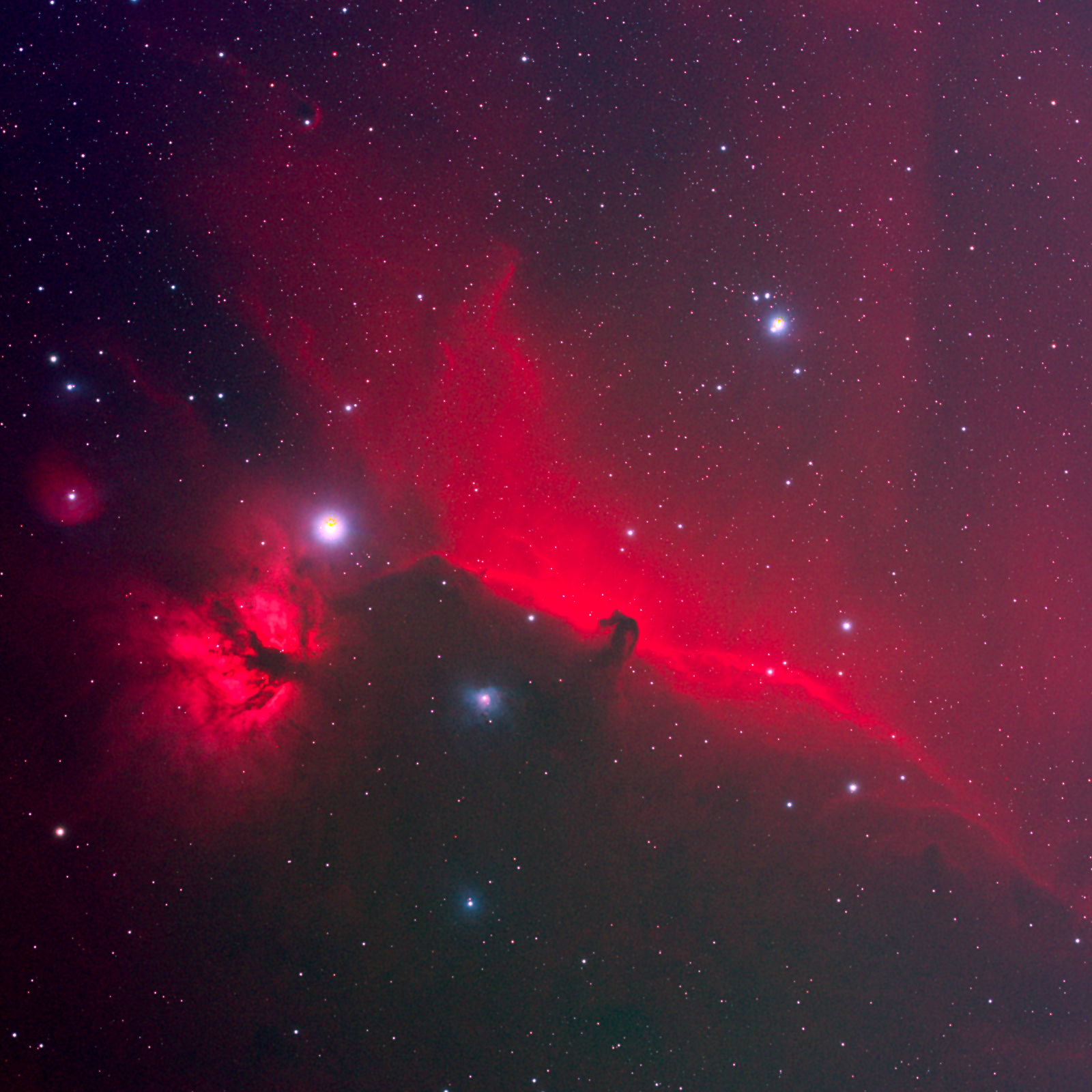
IC 434 is another well-known emission nebula, but it is particularly famous for its association with the dark nebula known as the Horsehead Nebula (also known as Barnard 33). Here are some key details about IC 434 and its surrounding features: 1. Location and Distance: IC 434 is located in the constellation Orion, about 1,500 light-years away from Earth. This region is part of the Orion Molecular Cloud Complex, one of the most active and well-studied star-forming areas in the night sky. 2. The Horsehead Nebula: The Horsehead Nebula is a small part of IC 434 and gets its name from its distinctive shape that resembles a horse’s head when viewed in silhouette. This shape is created by a dense cloud of dust and gas that is visible because it is backlit by the emission from IC 434. 3. Emission Nebula Characteristics: As an emission nebula, IC 434 is primarily composed of hydrogen gas that is ionized by the nearby bright star Sigma Orionis. The ionization causes the hydrogen to emit light, particularly in the red portion of the spectrum, similar to the Rosette Nebula. This characteristic red glow is a hallmark of emission nebulae. 4. Observation: IC 434 and the Horsehead Nebula are a popular target for astrophotographers. The Horsehead Nebula is challenging to observe visually through amateur telescopes due to its low brightness and contrast against IC 434. Long exposure photography with special filters can bring out the details and structure of the nebula. 5. Scientific Interest: The region around IC 434 is of great interest to astronomers because it provides an excellent opportunity to study the effects of star formation on the surrounding interstellar medium. The Horsehead Nebula, in particular, is a type of interstellar cloud known as a Bok globule, which is thought to be a site of future star formation. In summary, IC 434 is a significant astronomical object due to its striking visual features and its role in the ongoing process of stellar birth and evolution within the Orion Molecular Cloud Complex.
| Name of instrument | ZWO ASI6200MM Pro |
| Exposure time in seconds / image | 300.00 |
| Binning factor, horizontal axis/vertical axis | 1/1 |
| Filter used when taking images | 5 x Lpro / 5 x Ha / 5 x G / 5 x B |
| Pixel size including binning, X-axis (um)/Y-axis (um) | 3.76/3.76 |
| Camera gain in electrons per data number | 0.78 |
| Sensor temperature | -10°celcius |
| Name of telescope | ZWO AM5 |
| Focal length (mm) | 531.30228 |
| Right ascension of the center of the image (deg) | 85.32 |
| Declination of the center of the image (deg) | -2.40 |
| Start date/time of observation (UTC) | ‘2024-01-10T23:46:10 |
One response to “Horsehead Nebula IC434”
-
Joli !🤩
Leave a Reply